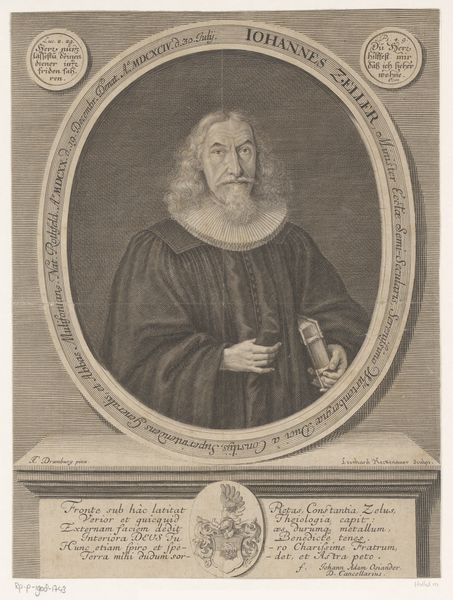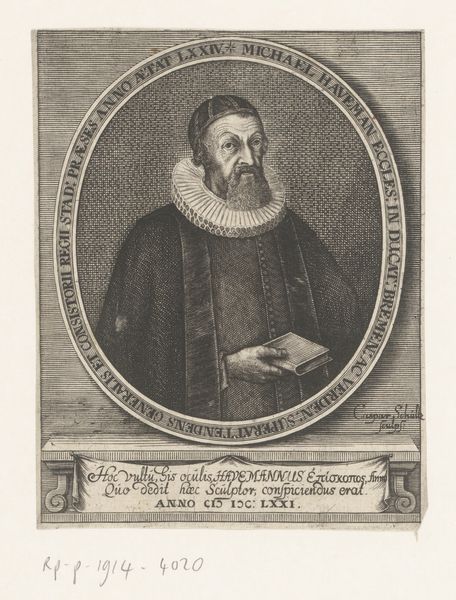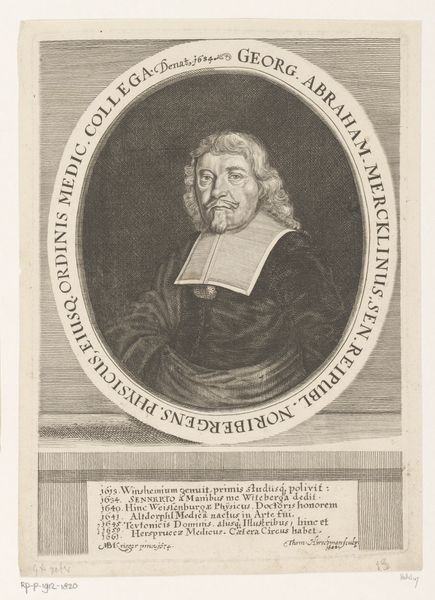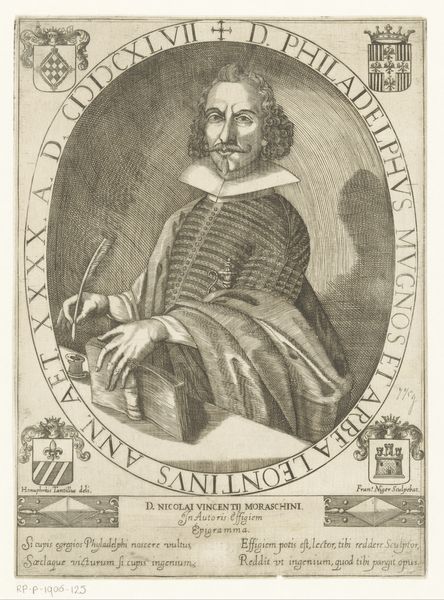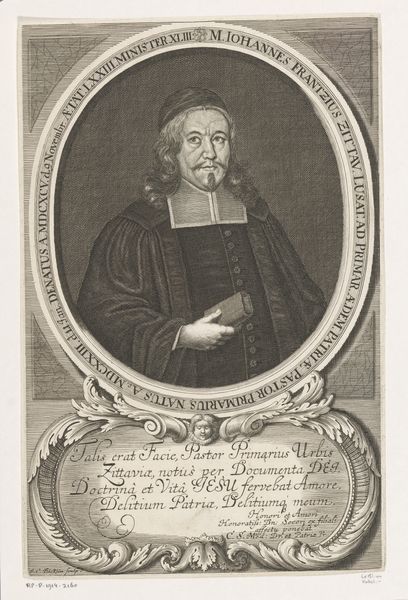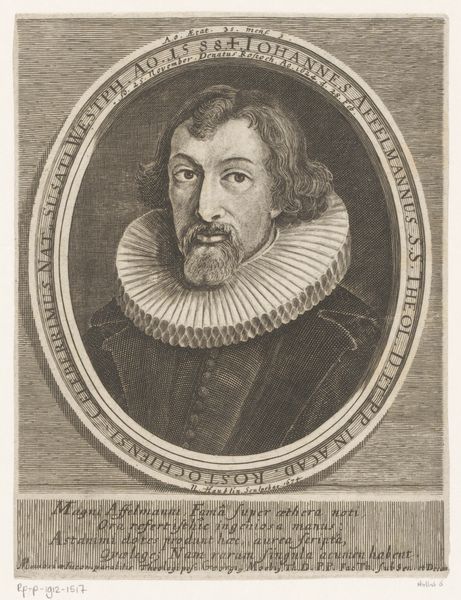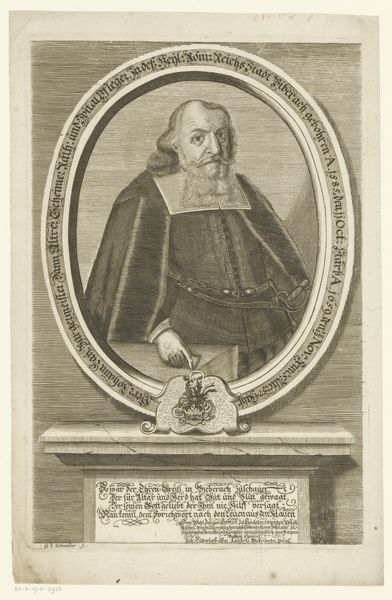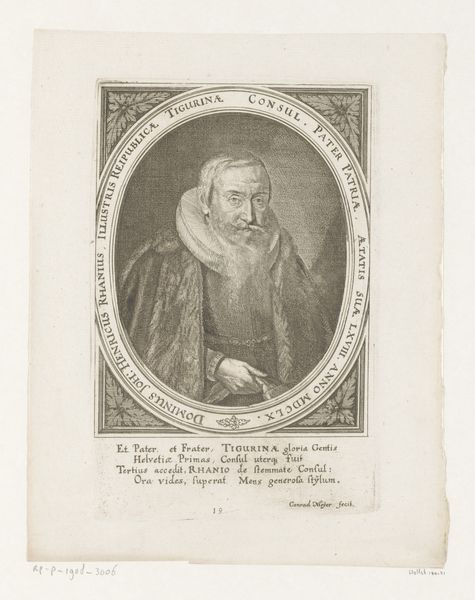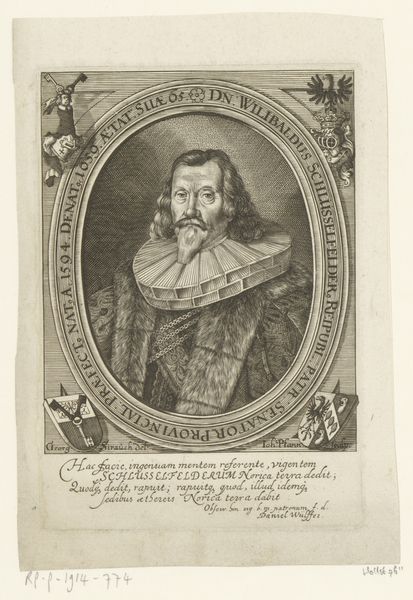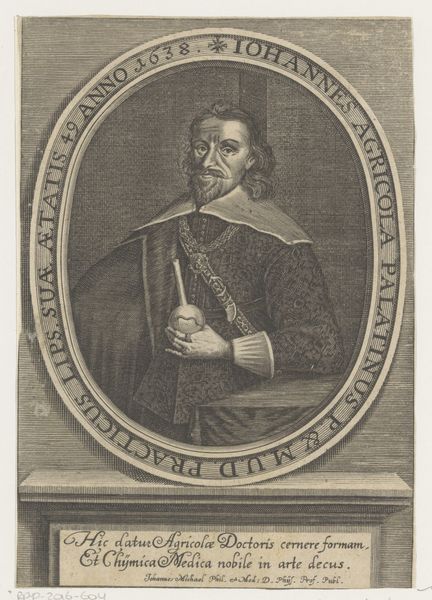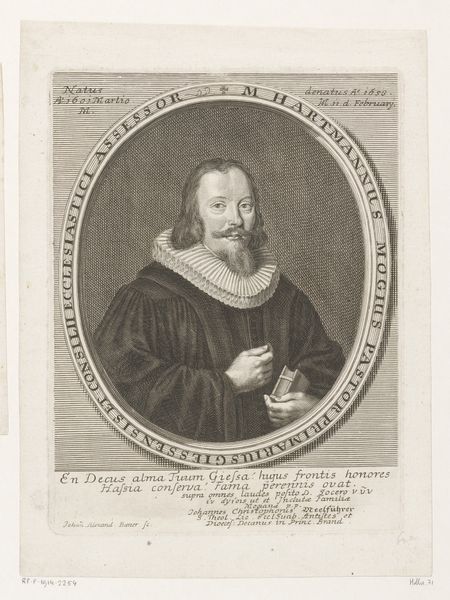
print, engraving
#
portrait
#
baroque
# print
#
old engraving style
#
figuration
#
line
#
history-painting
#
engraving
Dimensions: height 171 mm, width 128 mm
Copyright: Rijks Museum: Open Domain
Curator: Look at this portrait— it feels so somber, almost a little haunting, doesn't it? The eyes stare right through you. Editor: This engraving, "Portret van Philipp Ehrenreich Wider", probably dating between 1655 and 1700, presents us with more than just a face; it gives us a window into a specific historical moment, rendered in the intricate detail typical of the Baroque style. Curator: Baroque, right. It has that drama, I suppose, even in monochrome. It’s fascinating how line alone can convey so much weight and substance. That stiff collar though—talk about uncomfortable! Editor: Exactly. Collars such as this signified status within religious and academic circles of the time, visually representing the strictures and structures that defined identity and hierarchy. The inclusion of his coat of arms also underscores a concern with lineage and social standing. It served as both advertisement and record. Curator: I see that, the trappings of status carefully presented. And the book he holds, is that a bible perhaps? It suggests a learned man, one engaged with scripture and thought. Editor: Undeniably, it positions Wider within a learned theological tradition. What strikes me is the engraving’s capacity to immortalize someone's likeness while reinforcing broader social narratives. Curator: It’s a very deliberate act, isn't it? Creating a lasting image, shaping how someone is remembered. There's a power in that, a kind of manufactured immortality. Even the ornate lettering framing the portrait— it all speaks to crafting and controlling the message. Editor: Absolutely. It reveals the politics inherent in portraiture and printmaking, in conveying and negotiating reputation and lasting significance within both private and public spheres. Curator: I appreciate the reminder that even what appears simple on the surface – like this man staring out from a centuries-old print—is actually layered with so many cultural and historical meanings. Editor: It gives us pause to reflect on how power and identity intertwine to shape not just individual representations but our collective historical memory.
Comments
No comments
Be the first to comment and join the conversation on the ultimate creative platform.
